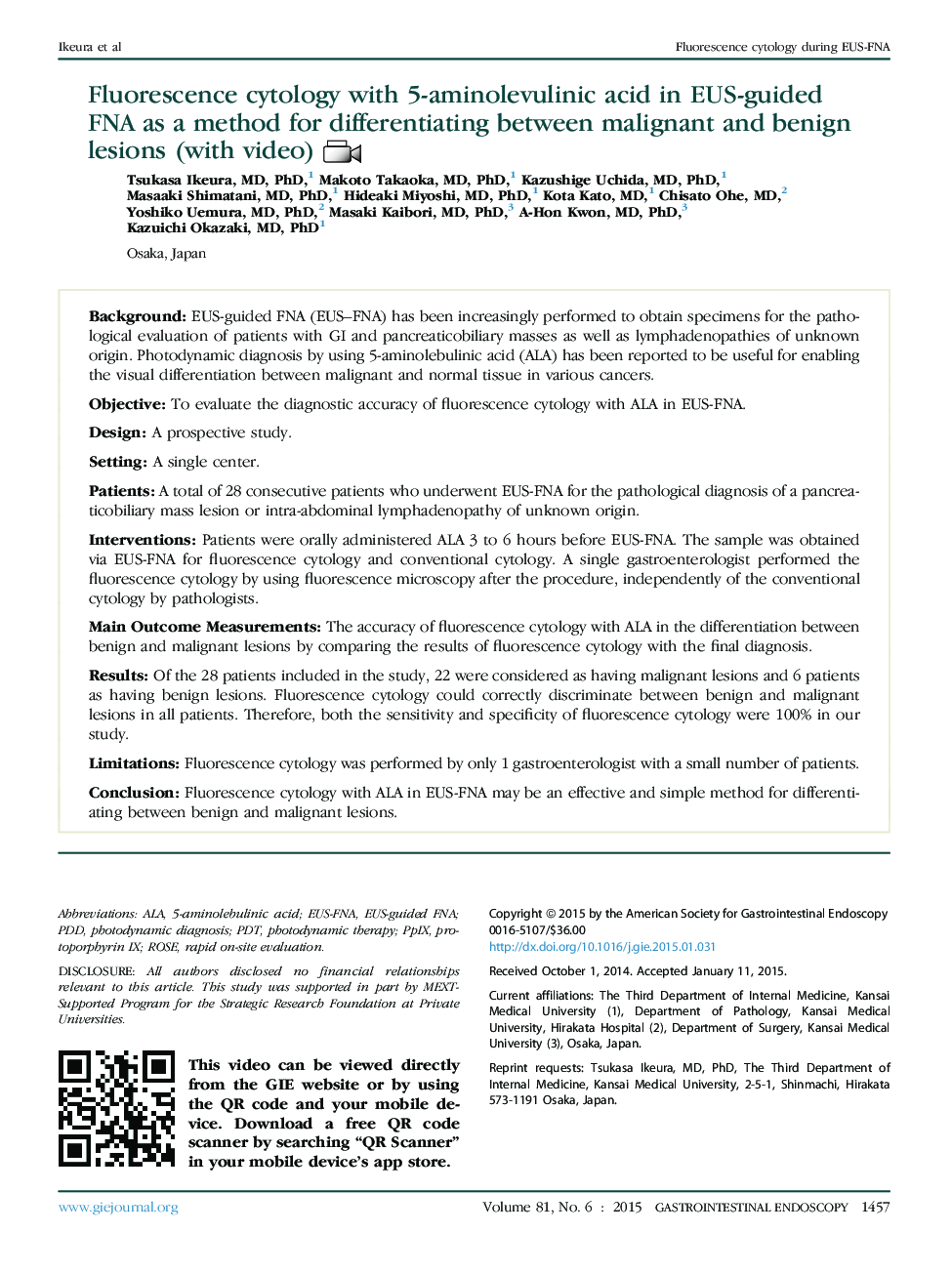| کد مقاله | کد نشریه | سال انتشار | مقاله انگلیسی | نسخه تمام متن |
|---|---|---|---|---|
| 3302773 | 1210303 | 2015 | 6 صفحه PDF | دانلود رایگان |

BackgroundEUS-guided FNA (EUS–FNA) has been increasingly performed to obtain specimens for the pathological evaluation of patients with GI and pancreaticobiliary masses as well as lymphadenopathies of unknown origin. Photodynamic diagnosis by using 5-aminolebulinic acid (ALA) has been reported to be useful for enabling the visual differentiation between malignant and normal tissue in various cancers.ObjectiveTo evaluate the diagnostic accuracy of fluorescence cytology with ALA in EUS-FNA.DesignA prospective study.SettingA single center.PatientsA total of 28 consecutive patients who underwent EUS-FNA for the pathological diagnosis of a pancreaticobiliary mass lesion or intra-abdominal lymphadenopathy of unknown origin.InterventionsPatients were orally administered ALA 3 to 6 hours before EUS-FNA. The sample was obtained via EUS-FNA for fluorescence cytology and conventional cytology. A single gastroenterologist performed the fluorescence cytology by using fluorescence microscopy after the procedure, independently of the conventional cytology by pathologists.Main Outcome MeasurementsThe accuracy of fluorescence cytology with ALA in the differentiation between benign and malignant lesions by comparing the results of fluorescence cytology with the final diagnosis.ResultsOf the 28 patients included in the study, 22 were considered as having malignant lesions and 6 patients as having benign lesions. Fluorescence cytology could correctly discriminate between benign and malignant lesions in all patients. Therefore, both the sensitivity and specificity of fluorescence cytology were 100% in our study.LimitationsFluorescence cytology was performed by only 1 gastroenterologist with a small number of patients.ConclusionFluorescence cytology with ALA in EUS-FNA may be an effective and simple method for differentiating between benign and malignant lesions.
Journal: Gastrointestinal Endoscopy - Volume 81, Issue 6, June 2015, Pages 1457–1462